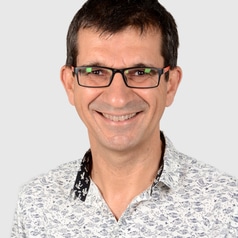Frédéric Ménard, an IRD researcher specializing in marine ecosystems, gives an initial assessment of operations at Saya de Malha.
The particular geographical situation of the Bank, as well as its specific characteristics, make it an exciting study site for scientists.
Saya de Malha continues to attract interest and raise questions.
Saya de Malha: an ecologist's point of view.
Saya de Malha, an exotic name little known to the general public, is a shoal area of the Mascarene Plateau, an oceanic plateau located to the east of Madagascar in the southwestern Indian Ocean.
Saya de Malha is one of the main shoals of this vast plateau that stretches like an arch over 2000 km between the Seychelles to the north and La Réunion to the south.
These islands and shoals, despite the distances that separate them, share a common and fascinating geological history.
All of them were formed by the hot spot of La Réunion, and have undergone the expansion of oceanic plates, periods of rising and falling sea levels, and erosion, over millions of years.
The seabed of Saya de Malha is still poorly mapped.
Based on the few expeditions that have taken place and satellite data, the overall topographical architecture of the bank is divided between shallow submerged reef ledges (around 50 m) on the eastern and northern parts of the bank, a central inland zone made up of a mosaic of seascapes at depths of less than 150 m, and a southern plateau.
All around, depths of over 3,000 m are quickly reached.
Saya de Malha is surrounded by the deep ocean.
The geomorphology and geographical location of Saya de Malha make it a shoal subject to complex oceanographic conditions that shape the ecosystems that develop there.
In this southern zone of the tropical Indian Ocean, a powerful, thick westward-flowing current, the South Equatorial Current, comes up against Saya de Malha, which rises abruptly from the deep ocean.
All these singularities make Saya de Malha a fascinating site for us ecologists.
How does the south-equatorial current, particularly intense at the surface, impact oceanographic conditions at Saya de Malha?
Does the shoal contain a rich and well-preserved fauna?
Or are the ecosystems disturbed by climate change?
Degraded by unscrupulous fisheries?
How are the emblematic Saya de Malha seagrass beds faring?
These shallow expanses covered with flowering marine plants, like our Posidonia meadows in the Mediterranean.
What are the links between bottom-dwelling organisms and the fauna living in the water column?
What about sharks?
What about marine mammals?
What about seabirds?
How would you sum up the results of our extensive prospection? At first glance, Saya de Malha doesn’t live up to our expectations. Few big fish, very few sharks, very few seabirds. The macro fauna is nowhere to be seen. And yet, the seagrass beds are in good health, the fish are present in the coral zones, albeit on a small scale, and the mosaic of habitats is home to a small but diverse and fascinating fixed fauna, such as sponges, Our plankton nets collect an interesting diversity of organisms living in the water column, and the images brought back by the small underwater robot we deployed on the slope breaks testify to the presence of fish, sharks, corals, gorgonians, crinoids (known as “sea lilies”)……. Refuge zones for macrofauna that we hardly see on the plateau?
A lot of work lies ahead to understand the links between the unique environmental conditions of Saya de Malha and the distribution of flora and fauna.
The small community of Mauritian, Seychellois and French scientists aboard the S.A. Agulhas II are fascinated by the many questions to be answered.
And the conviction that the knowledge acquired here and together will enable us to better preserve the Saya de Malha site.
Frédéric Ménard is a researcher at IRD, the French Research Institute for Development.
He was Director of IRD’s OCEANS, Climate and Resources Department from 2015 to 2020.
He now holds the position of Scientific Advisor Overseas and participates in IRD’s scientific strategy.

